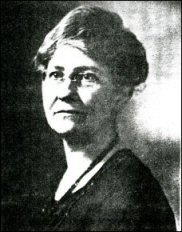|
 |
|
 |
Wednesday, January 19, 1949
Few towns have such a valuable reference pertaining to its formation and history as ours, and we have the Grange to thank for the initial proceedings toward their preservation. Mrs. Meashaw has the names of the committee appointed to carry out this interesting project. They were Ellen Faulkner, Hattie Delong, Mrs. Clarinda Nesbitt, William Delancey, H. E. Hayden, and William Capel, all of whom have passed away except Mr. Delancey. So in the beginning we can thank Ellen Faulkner and the Grange for originating the idea of looking into Parishville history, and Byron and Katy Parker for the preservation of all those volumes which record those long ago happenings which so intrigue us of to-day. Many of the papers and letters are leather-bound and there are account books galore. History, local and otherwise, is of universal interest and their recordings are precious indeed. Happy is the town or State having those within their borders who have sufficient interest and public spirit to helping any way to preserve such records. Parishville Grange, Byron Parker and his wife had that spirit, and to them we render thanks.
There is one institution which appears to be extinct. At least I have not seen a tin pedlar for a long time. His arrival before a house in by-gone days was quite an event. Some preparations had been made for it. For he exchanged the shiny new tin articles in his cart for the rags the housewives had been carefully saving for that very day. In most every home a container for the rags was found, generally a flour sack hanging in a convenient place where all scraps left from sewing and weaving found themselves deposited. Up until 40 years ago, most women made their own clothes and even men's shirts and pants, in early days first weaving the cloth for them. Incidentally, it can be imagined what a boon to women the invention of the sewing machine must have been. So long before the "new look" so much talked about recently, the raiment of women was really clothing, yards and yards of cloth fashioning their voluminous petticoats and dresses. They wore other garments, too, now only seen in some forgotten trunk, or perchance made over into sundry other articles.
In cutting out men's and women's clothes, many scraps were left which were made into rugs or carpets, many eventually finding their way into the rag-bag. Very little was wasted in those happy horse-and-buggy days. Worn-out clothes were made into rugs and carpets, thus saving them down to the last shred besides covering the floors, with their loose construction and wide cracks. Also I believe weaving and hooking rugs was an outlet for much artistic ingenuity. Life for women of an older generation was not too full of beauty, rather most of their possessions ministered to their real needs. So it was an absorbing and fascinating task to draw the pattern of a hooked rug onto the background and a latent artistic sense went into the "stripping" of a new rag carpet. Then, too, the dyes they used had to be made out of materials at hand, as the commercial ones had not yet appeared on the markets. Truly, a rag carpet was a self-made creation. Many of them were beautiful. Quilts also required much cutting and piecing. The patterns they invented were many and ingenious, and lucky the women who inherited a quilt made by her grandmother. Carpet, rug, and quilt-making came in between the other labors, such as cooking, washing, candle-making, caring for the sick and bearing eight or ten babies to a family.
But my tin pedlar whom I started out with! Sometimes his calls were so infrequent that several bags of rags were saved. And then one day here he came, his lazy, fat horse drawing a red cart. The accumulations of many days and months were carried out to the road-side where the pedlar waited, and he opened the black doors of the cart. O, such a lovely shining array of tinware; such shapely pails and dippers; such deep bread tins; and there were colanders and sieves, and funnels and skimmers and graters and dish-pans and basins and teapots and tea-kettles and cups. Sometimes the housewife would haggle a bit over the trade and she always eyed the scales the whlile the pedlar weighed her rags. Finally she made her selection from the array in the cart for which she exchanged her hoard of scraps and the horse and cart would trundle to the next stopping-place.
But one day the tin pedlar trundled off into that limbo which swallows up all out-moded forgotten things once known and needed and cherished, but abandoned before the March of Time and man's insatiable instinct for "progress."
|